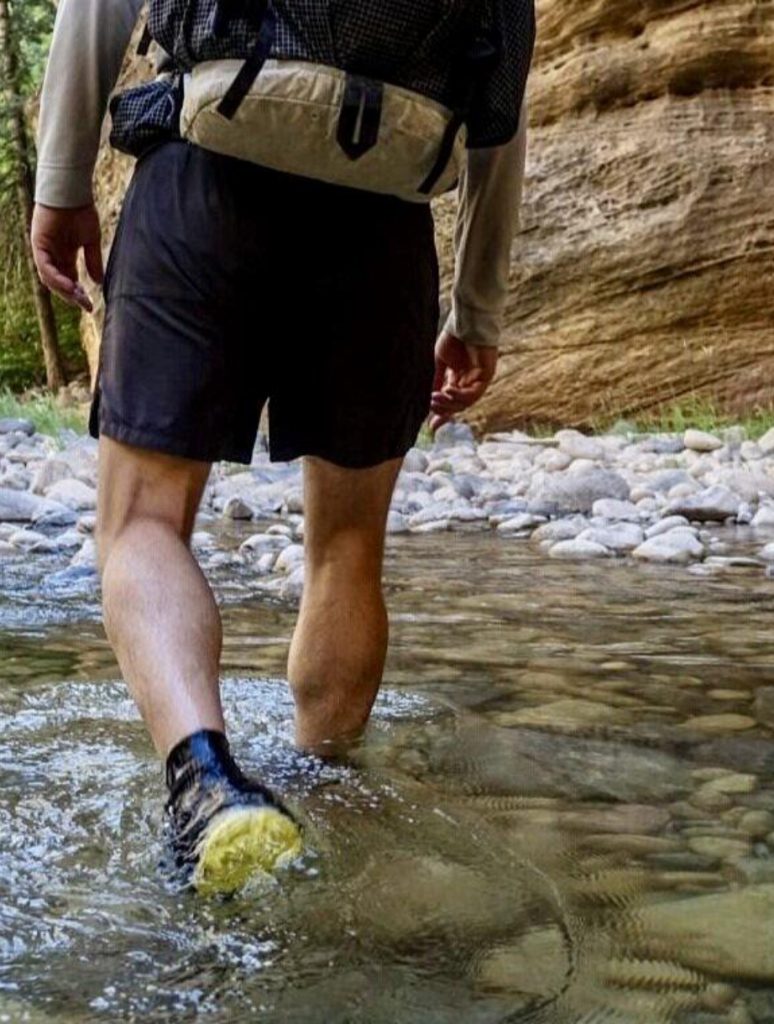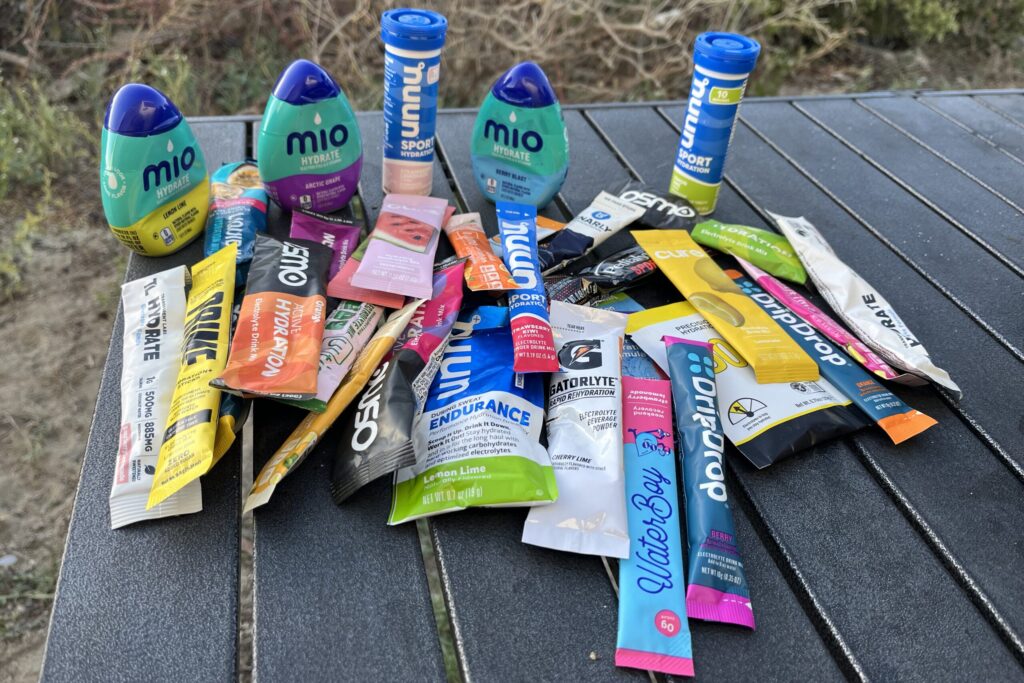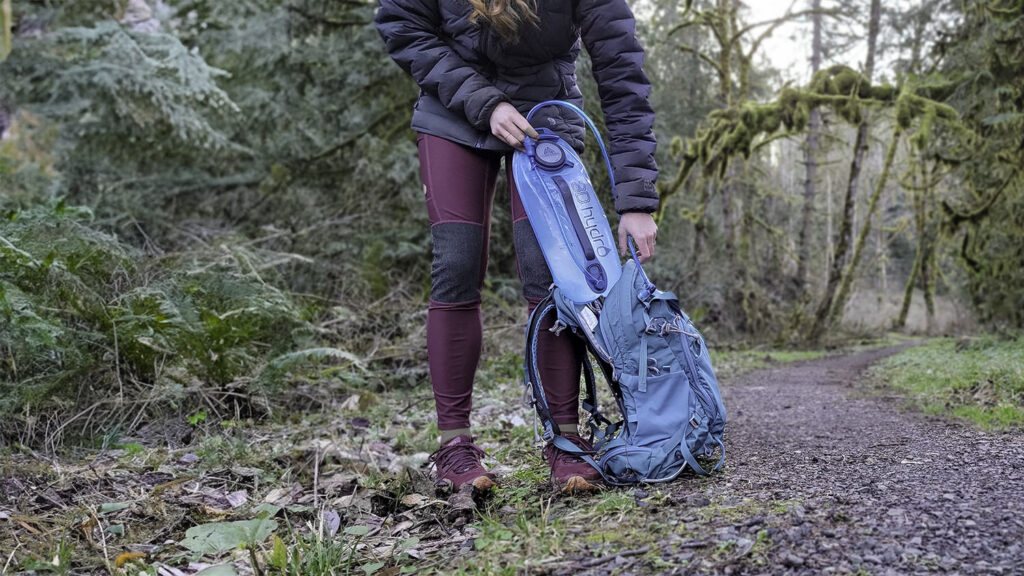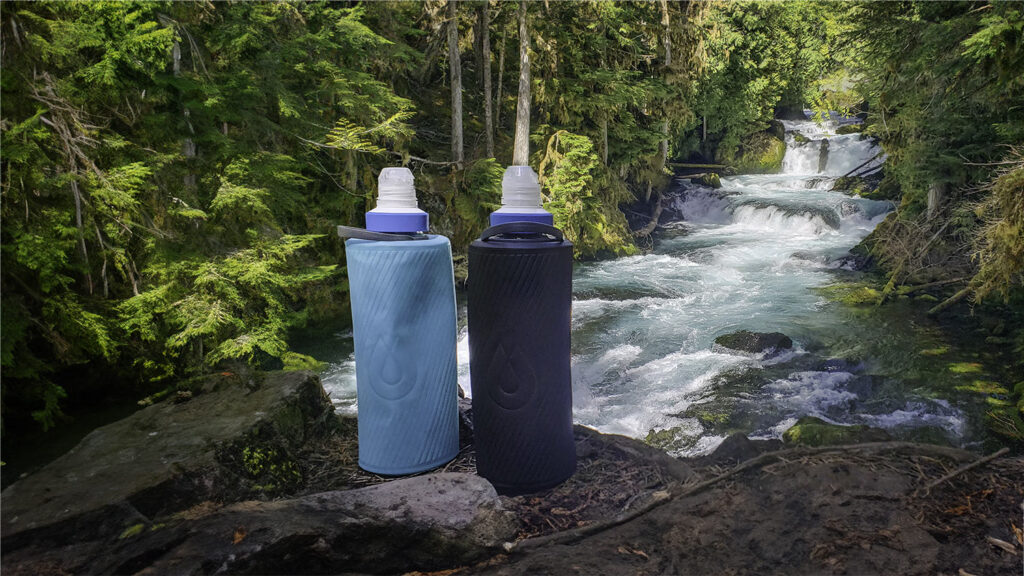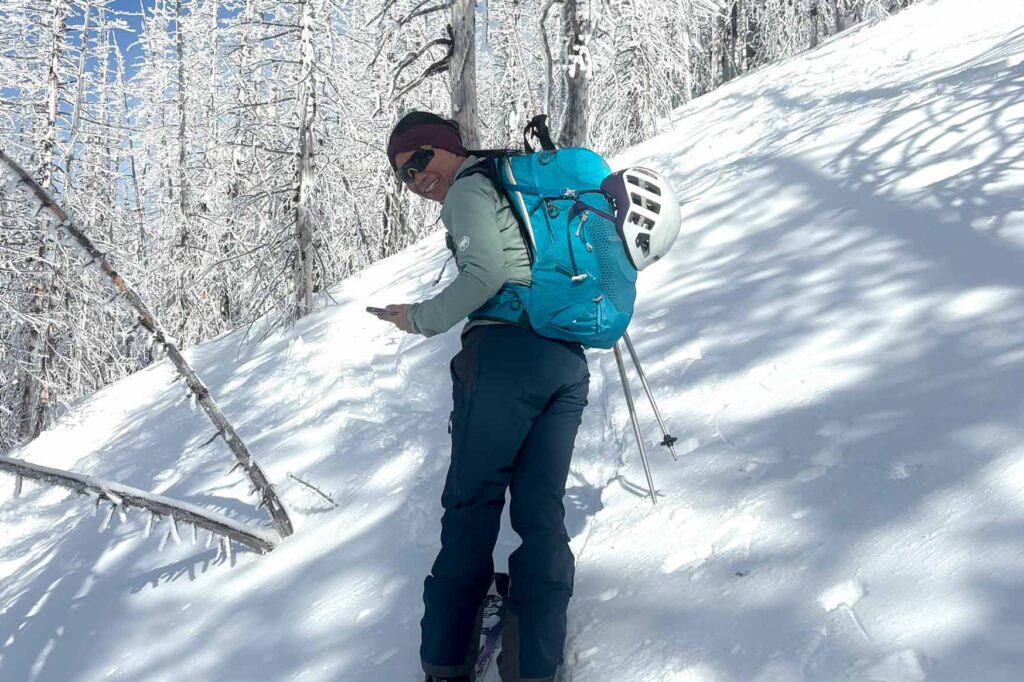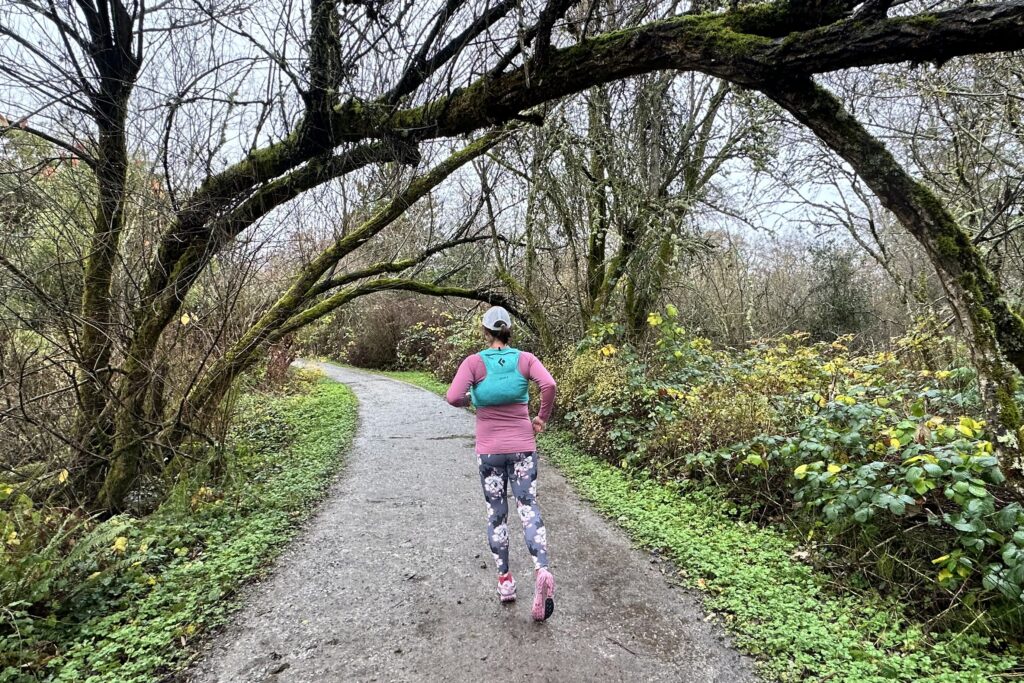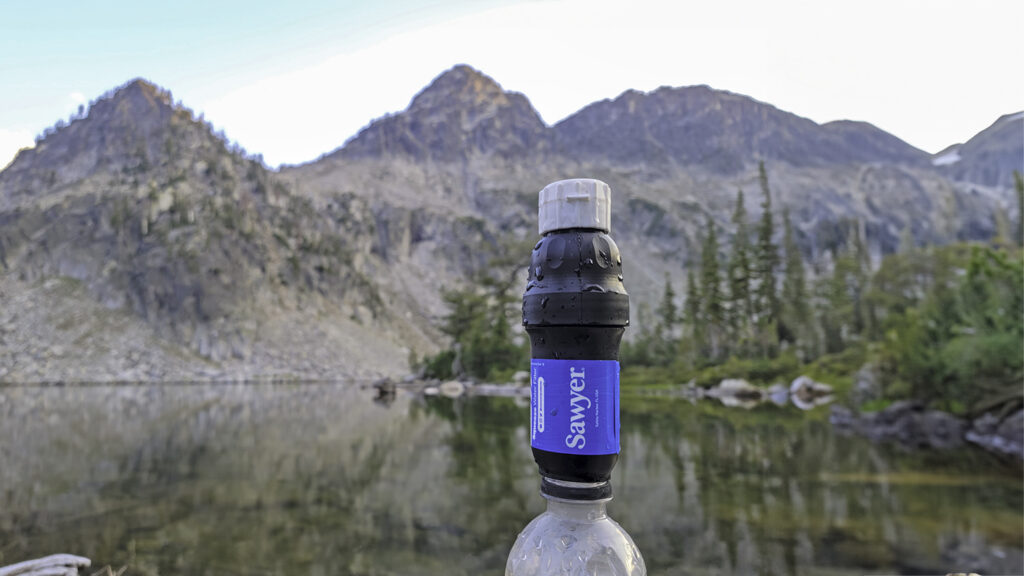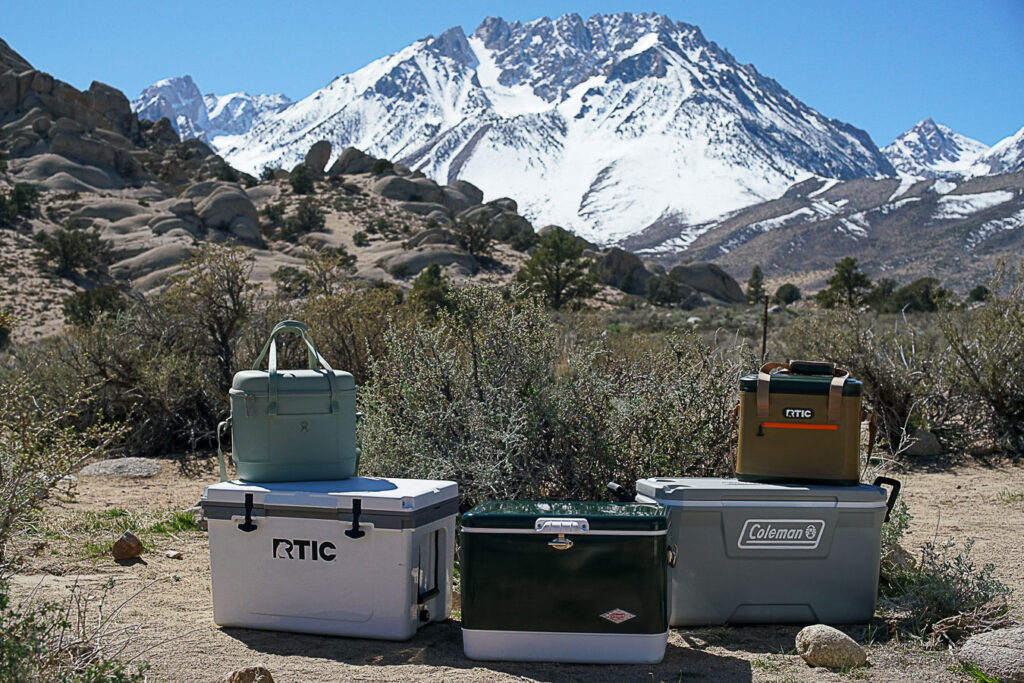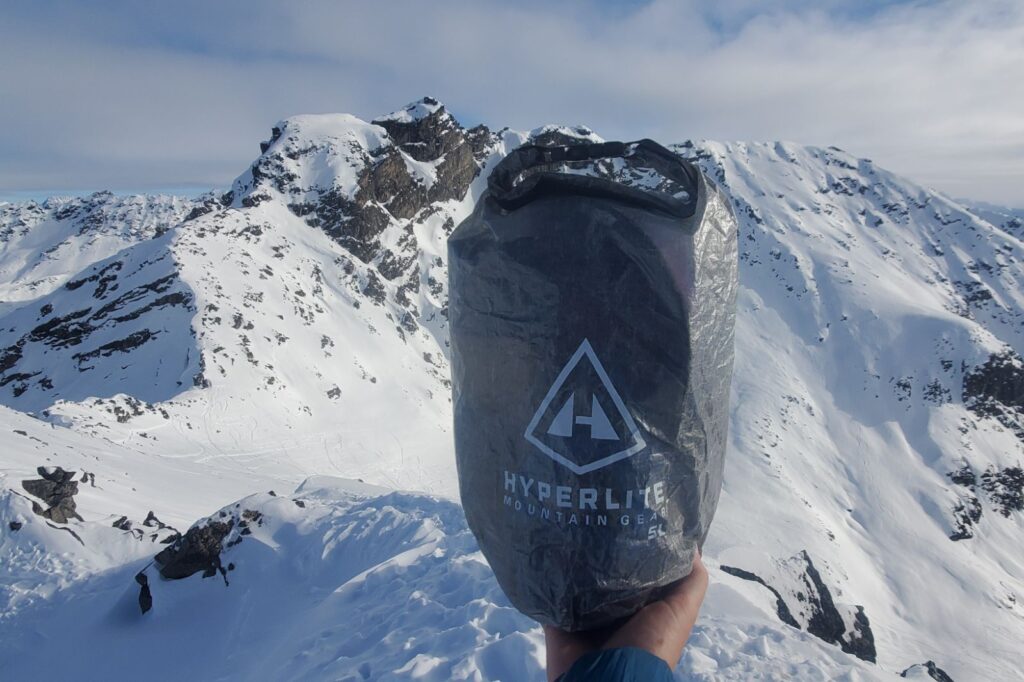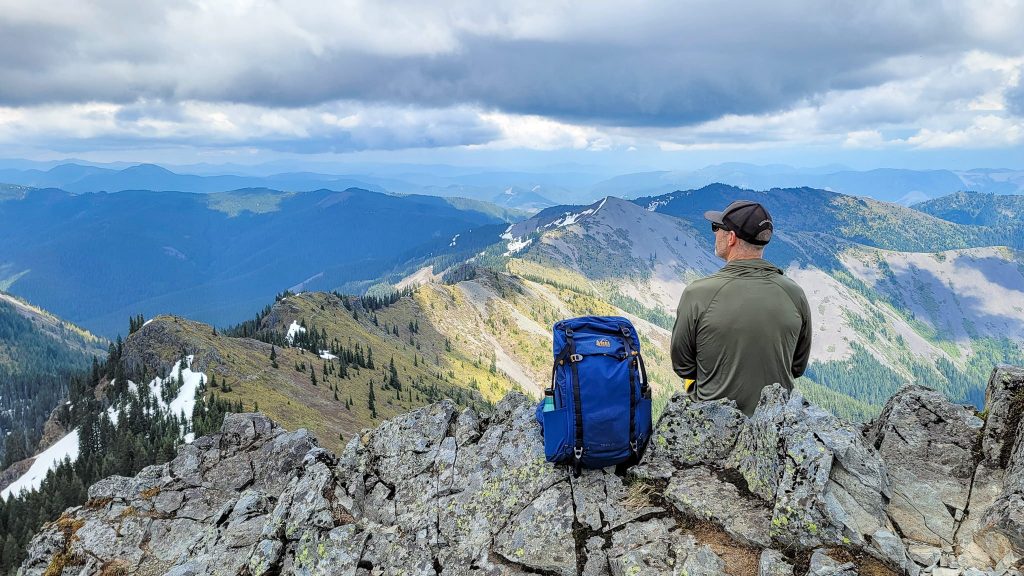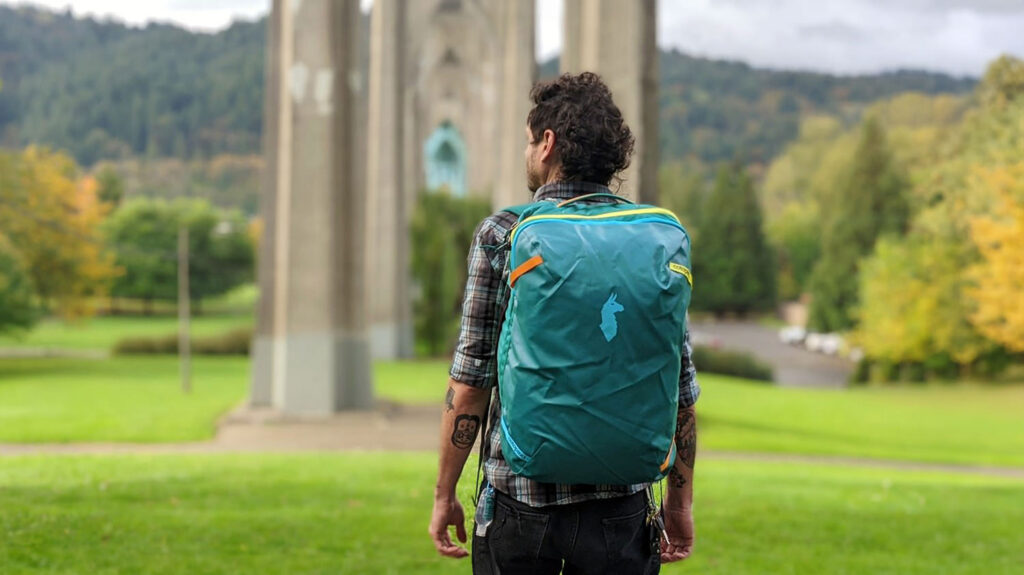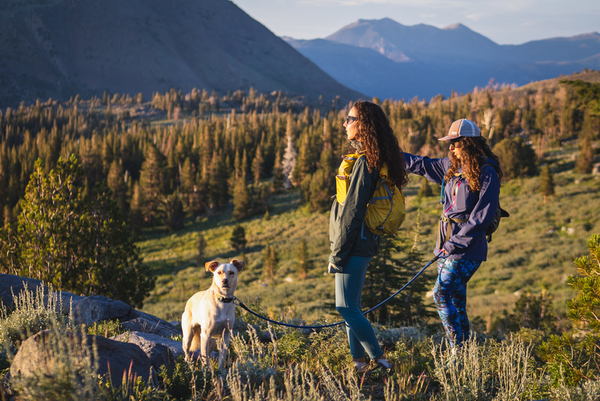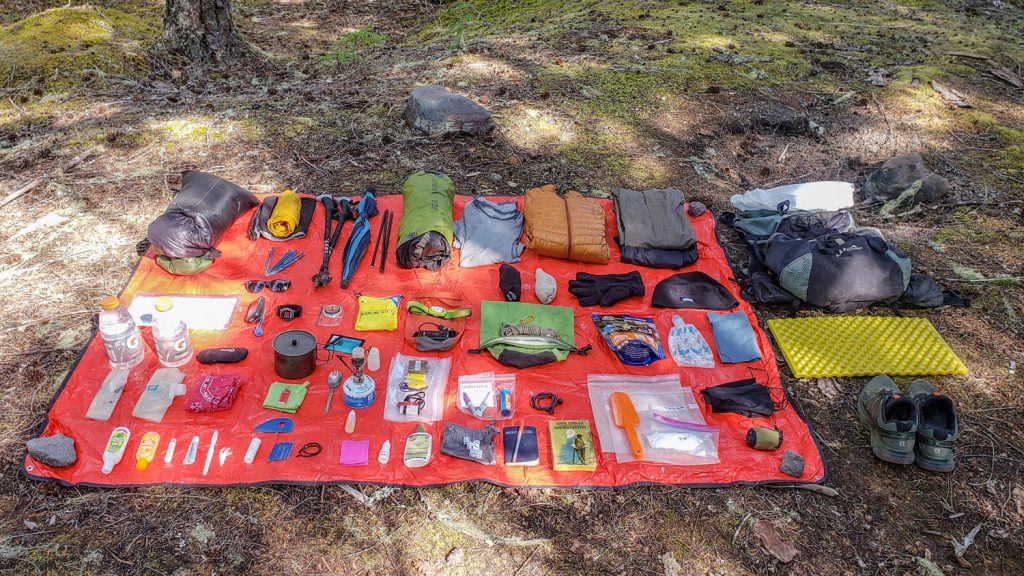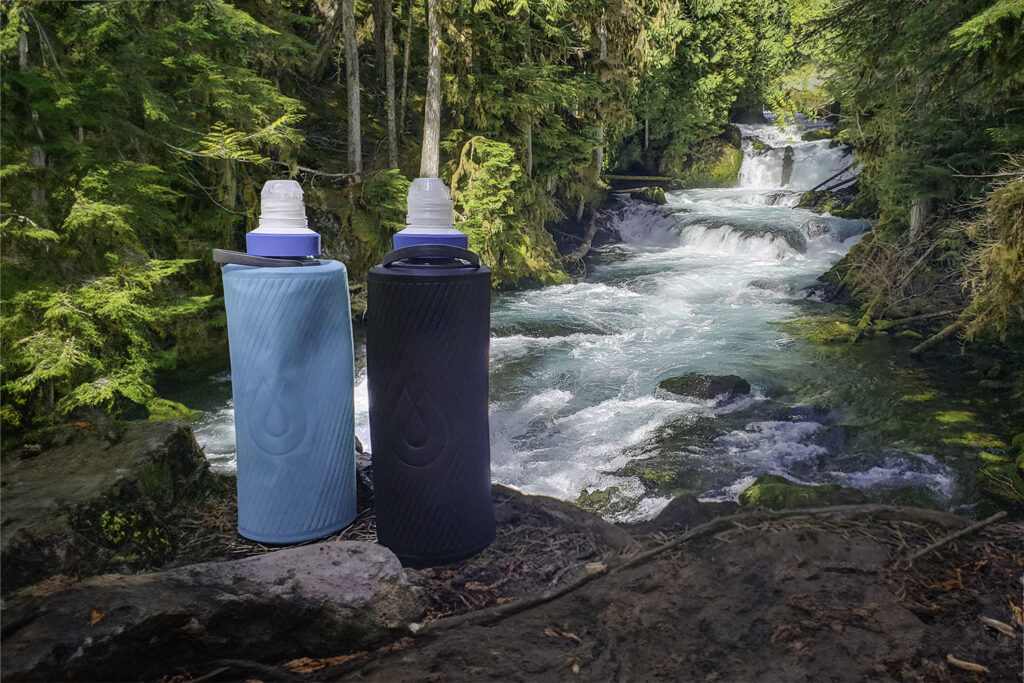
Over the years, our team has tested dozens of water bottles on and off the trail. A few months ago, we took the top performers from brands like Hydro Flask, Yeti, and Nalgene to southern Utah. We carried them with us for miles on canyon hikes, steep approaches to climbing crags, and rest days in town to see which bottles held their own against the ever-variable desert climate.
We examined factors like durability, weight, insulation, and ergonomics to determine the best bottles for everything from daily hydration to ultralight backpacking. This guide will help you find the water bottle best suited for everyday sipping and quenching your thirst in the backcountry.
And for more info, check out some of our other popular gear guides:
Quick Picks for Water Bottles
Check out this quick list of the best water bottles, or continue scrolling to see our full list of favorites with in-depth reviews.
Best Water Bottle Overall: Hydro Flask Wide Mouth ($45)
Best Insulated Water Bottle for Everyday Use: Hydro Flask Standard Mouth ($40)
Best Packable and Ultralight Water Bottle: HydraPak Flux ($19)
Most Durable Budget Water Bottle: Nalgene Wide Mouth ($16)
Most Durable Insulated Water Bottle: YETI Rambler ($40)
Affordable and Customizable Insulated Water Bottle: Takeya Actives Insulated ($35)
Best Filter Water Bottle: Grayl GeoPress ($100)
Best Budget Insulated Water Bottle: Owala FreeSip Vacuum Insulated ($33)
Best Budget-Friendly Filter Water Bottle: Lifestraw GO Series ($45)
Most Affordable Water Bottle: CamelBak Chute Mag Renew ($17)
Best Environmentally-Friendly Water Bottle: Yomious Glass ($18)
Best Water Bottle for Ultralight Backpacking: Glaceau Smartwater ($3)
Most Packable Large Capacity Water Storage: Platypus Platy Bottle ($19)
What’s new
For this guide, we revisited some familiar favorites while putting some new models to the test to create a list that blends the tried-and-true with impressive newcomers.
- The Wide and Standard Mouth bottles from Hydro Flask maintained their spots at the top of our list – continuing to win us over for their blend of style, durability, and superior insulation.
- We welcomed the Grayl GeoPress water bottle as the go-to choice for the most intense filtration needs paired with easy sipping.
- The HydraPak Flux impressed us with its compactness and ultralight capability, earning it a top three spot.
- With its affordable price tag, effective insulation, and unique spout, the Owala FreeSip Vacuum Insulated bottle is a new addition to the list.
- The CamelBak Chute Mag Renew found a place as a solid budget option for both hiking and everyday use.
Water Bottles Overall Testing Scores
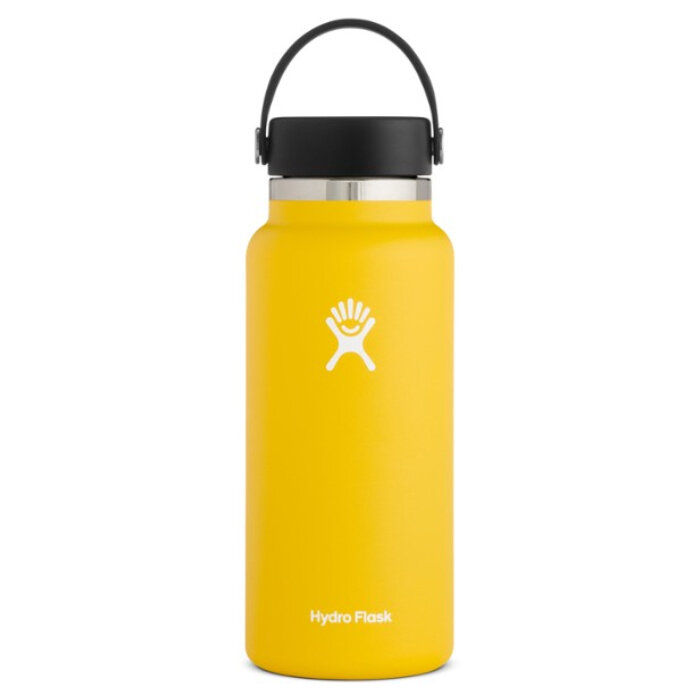
Hydro Flask Wide Mouth
Best Water Bottle Overall
CleverHiker Rating: 4.9/5.0
Price: $45
Weight: 1 lb. 0.8 oz.
Insulated: Yes
Pros
- Excellent insulation
- Many color choices
- Lots of accessory options
- Easy to add ice/supplements
- Leakproof
- Dishwasher safe
Cons
- Expensive
- Heavy for backpacking
- Many wide mouth bottles don’t fit in cup holders
With its superior insulation and attractive design, the Hydro Flask Wide Mouth shines in its combination of style and practicality. Though its weight makes it less ideal for those gearing up for an ultralight backpacking trip, the Hydro Flask is just as perfect for sipping on your lunch break as it is for tackling miles of switchbacks. Whether you’re hiking on the trail or trying to keep up with everyday hydration, it’s a water bottle that will last for years to come.
Hydro Flask touts the insulating capability of their bottles with results to back up the hype. Featuring double wall vacuum insulation, the Wide Mouth accepts cold and hot liquids. (One exception – hot liquids cannot be used with the straw lid). We put the Hydro Flask’s insulation to the test in the Utah desert, having the Wide Mouth sit in full sun for the entirety of a day at the climbing crag. Even after baking in the sun, the bottle’s insulation kept water consistently cold for the day, and the ice we added to the bottle remained intact into the afternoon.
The Hydro Flask is slightly less effective with hot beverages – and its insulation makes the bottle heavy. But reliably keeping liquids at their intended temperature outweighs the added ounces.
Hydro Flask embraces personalization, offering a rainbow of color choices and several lid options, including the Straw Lid, Chug Cap, and Flex Cap. Spillage is often hard to avoid when drinking from wide mouth water bottles. Cap styles like the Straw Lid, which features a foldable mouthpiece that locks in place, make drinking on the go easy and spill-free while also sealing tightly to prevent leakage.
The Hydro Flask’s colorful exterior is eye-catching and exhibits a solid structural design free from seams and flexing that could weaken the bottle over time. The higher cost might give pause, but the burly stainless steel build handles falls and drops without impact. We put the Hydro Flask through a series of durability tests, including hard falls onto uneven rocky landings. The bottle weathered these beatings with only a few dings and scuffs. We’ve had our Hydro Flask for several years. A few dents and scratches in the exterior paint are the only damages. The Hydro Flask Wide Mouth is durable enough to withstand rough backcountry conditions and won’t need replacing any time soon.
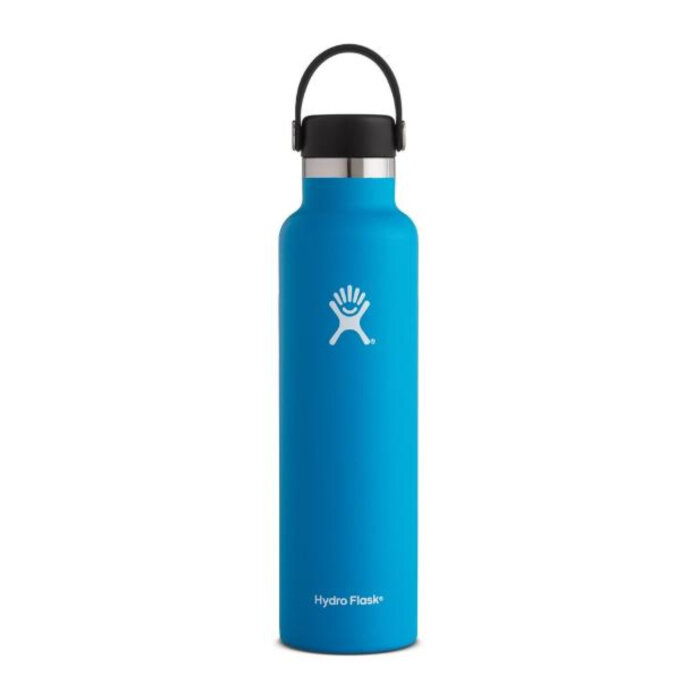
Hydro Flask Standard Mouth
Best Insulated Water Bottle for Everyday Use
CleverHiker Rating: 4.8/5.0
Price: $40
Weight: 12.3 oz.
Insulated: Yes
Pros
- Excellent insulation
- Many color choices,
- Leakproof
- Fits in standard cup holders,
- Dishwasher safe
Cons
- Harder to hand wash
- More difficult to add ice/supplements than wide mouth
Sharing many qualities with its Wide Mouth cousin, the Hydro Flask Standard Mouth repackages exceptional insulation and durability in a slimmer and lighter design.
The capacity of the Standard Mouth is less than the Wide Mouth – 24 ounces versus 32 or 40 ounces. This might deter those needing to carry enough water to last them over the course of a day. For day hikes and situations where a refill is readily available, though, this bottle’s lighter and thinner profile lets us slip it into a car cup holder or a backpack pocket.
The narrower build is just as tough and free from structural deficiencies. We conducted extensive fall tests with the Hydro Flask, which involved dropping the bottle from standing height onto surfaces varying from dirt hiking trails to jagged talus. The Standard Mouth sustained no damage in these falls, except for some scrapes in the paint and a couple dents in the bottom caused by a protruding rocky edge. Otherwise coming away unscathed, the Hydro Flask Standard Mouth proves capable of withstanding rough application in the outdoors. Its structural strength points to a longevity that will provide years of use.
The Standard Mouth features Hydro Flask’s excellent double wall vacuum insulation to hold cold and hot liquids. Replicating the testing we did with the Wide Mouth in the sunny Utah desert, the Standard Mouth’s layers of insulation kept our water cold through an entire day of direct sun exposure and kept ice frozen throughout the morning and into the afternoon. Like the Wide Mouth, the bottle was less efficient at keeping hot liquids at their respective temperatures. We observed hot liquids becoming lukewarm after a few hours, staying hot through the morning but cooling by early afternoon.
Though there are not as many lid options for the Standard Mouth, there is a Straw Lid available, which eliminates leakage and makes drinking on the move quick and spill-less. The flexible and pivoting handle built into both the Standard and Straw Lids provides a comfortable option for carrying the bottle in hand. Hydro Flask also offers this bottle a wide range of color choices
The Wide Mouth ranks higher than the Standard Mouth because of its larger capacity and convenience (ease in hand washing and adding ice/hydration mixes). However, the Hydroflask Standard Mouth’s effective insulation, durable stainless steel design, and sleek profile set it apart as a versatile water bottle to support everyday adventures.
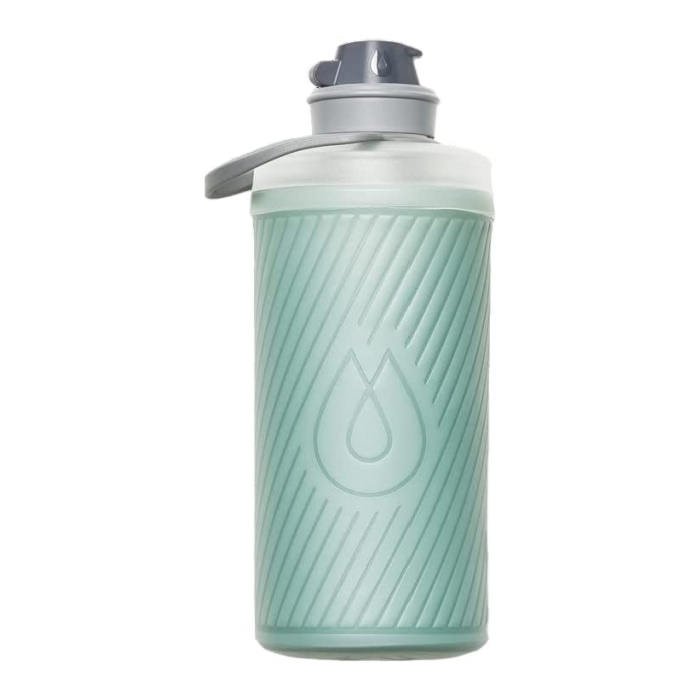
HydraPak Flux
Best Packable and Ultralight Water Bottle
CleverHiker Rating: 4.7/5.0
Price: $27
Weight: 3.6 oz.
Insulated: No
Pros
- Ultralight
- Compact
- Leakproof
- Measurement lines
- Compatible with Katadyn BeFree Water Filter
- Dishwasher safe
Cons
- Holds on to flavors
- Not as durable as rigid bottles (but very good for a soft bottle)
Soft water bottles often take a back seat to their hard shell counterparts, but the packability and sturdy flexibility of the ultralight HydraPak Flux make it a top contender for hikes and backpacking trips.
The Flux is made of a malleable plastic that readily bends, folds, and compresses into whatever shape you need. This makes it well suited for traveling or squeezing into the tight corners of a pack. A side seam running the length of the bottle has potential to deteriorate over time with repetitive folding. However, the material is robust and proves resistant to tears and punctures and resilient against falls.
The biggest detractors for the HydraPak Flux are the initial plastic-y taste and the way that added flavors linger in the bottle. It’s possible to add ice and hydration mixes to the Flux, but it takes multiple cleanings to rid the bottle of residual flavors. At least the Flux is dishwasher safe, making this task easier.
As a non-insulated bottle, the HydraPak doesn’t maintain temperature control. Unlike most plastic or soft shell bottles, though, it can hold cold and hot water, offering a different type of flexibility to meet your needs on the trail.
HydraPak also makes a compatible Filter Cap that removes bacteria, parasitic cysts, and microplastics. We’ve used this filter cap on backcountry camping and fishing trips, simply dipping the Flux into a nearby stream and taking a sip. This feature transforms water sources into immediate and worry-free spots to rehydrate.
The HydraPak’s ability to compact without sacrificing its structural integrity sets it apart from other soft bottles, making it an ideal choice for backpacking. Stainless steel bottles might have ultimate longevity, but HydraPak uniquely blends durability with ultralight weight in a bottle that has long-lasting value.
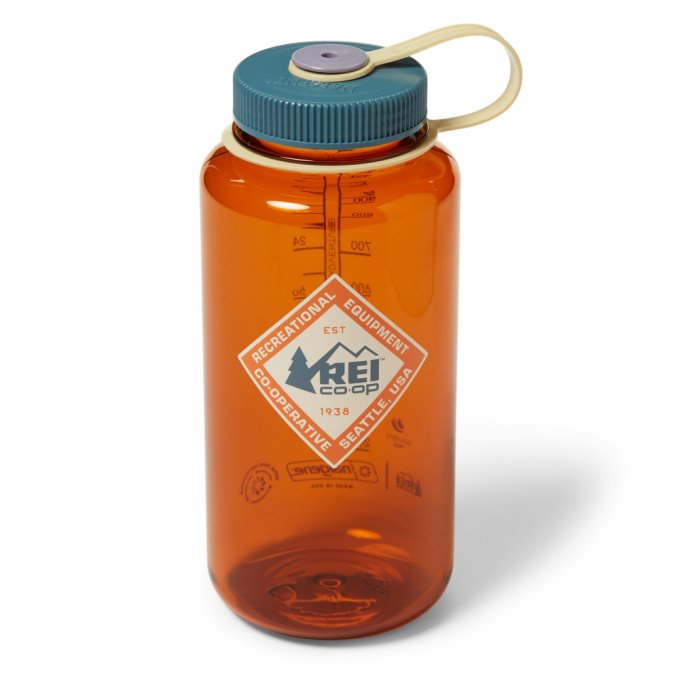
Nalgene Wide Mouth
Most Durable Budget Water Bottle
CleverHiker Rating: 4.6/5.0
Price: $17
Weight: 6.25 oz.
Insulated: No
Pros
- Affordable
- Many color/pattern choices
- Measurement lines
- Easy to add ice/supplements
- Durable
- Dishwasher safe,
- Lightweight
Cons
- Many wide mouth bottles don’t fit in cup holders
The Nalgene Wide Mouth lives up to its reputation as the classic water bottle. Its no frills design is simple and straightforward, keeping its weight and price to a minimum. Made of burly BPA-free plastic, it withstands scrapes and falls, even from heights and hits onto rough surfaces. With a no-seams design and sturdy, flex-free construction, it is a robust bottle with a longer lifespan than your average plastic water bottle.
Though too big to fit into a car cup holder, the Nalgene slides easily into backpack pockets. As one of the lightest weight bottles on this list, it can be carried comfortably over miles, making it a clear choice for backpacking trips and long-distance adventures. The Nalgene perfectly blends minimal weight with durability, which has made it a staple water bottle for outdoors people everywhere.
They may not be insulated, but Nalgenes can hold cold and hot water. This lets us quench our thirst or shove a bottle of toasty liquid into our sleeping bag for extra warmth. It can be hard to avoid spillage when drinking on the go; however, the wide mouth makes adding ice or hydration mixes an easy task. Nalgenes are dishwasher safe, but washing by hand is also no problem, thanks to the ample opening.
In addition to its affordability and practicality, the Nalgene does not disappoint in its array of color choices. It’s also available in an Ultralight model and Narrow Mouth version. Overall, with its long lasting design, ability to withstand the toughest conditions, and cheap price tag, the Nalgene Wide Mouth proves itself to be a classic time and time again.
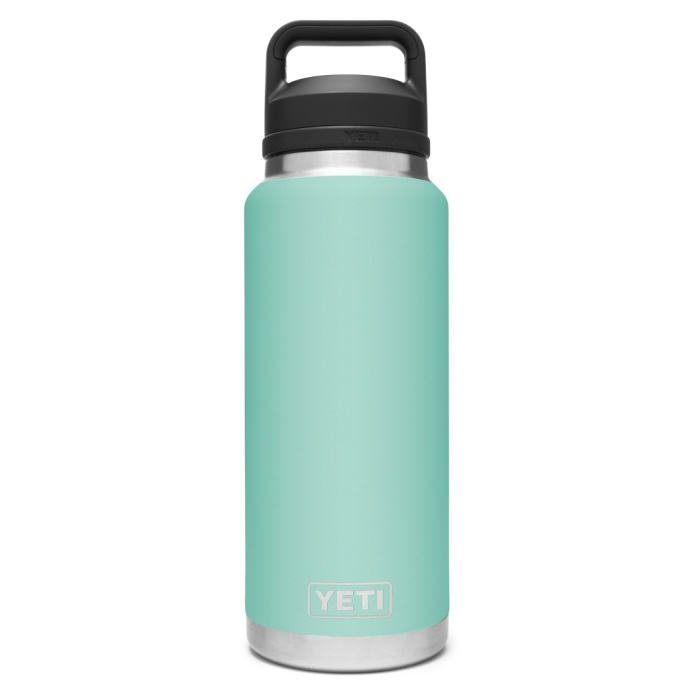
YETI Rambler Vacuum
Most Durable Insulated Water Bottle
CleverHiker Rating: 4.5/5.0
Price: $50
Weight: 1 lb. 8 oz.
Insulated: Yes
Pros
- Excellent insulation
- Many color choices
- Lots of accessory options,
- Durable
- Easy to add ice/supplements
- Dishwasher safe,
- Leakproof
Cons
- Expensive
- Heavy for backpacking
- Many wide mouth bottles don’t fit in cup holders
YETI has built a brand around high-performance insulation, and the YETI Rambler lives up to this reputation with its superior insulation and rugged durability. Built with kitchen-grade stainless steel that’s designed to resist punctures, the Rambler is one of the burliest bottles we tested. Our bottle endured several drops and falls with almost no impact – the extent of damage being minor scuffs to the exterior paint. The Rambler has proven itself able to withstand the roughest conditions.
Featuring double-wall vacuum insulation, the YETI can hold both cold and hot liquids. It held our beverages at their intended temperatures and kept ice frozen for the entirety of the day, edging out comparable models with its excellent insulating capabilities. The Rambler is one of the most reliable options if temperature control is an important factor, especially for those planning on using a water bottle with hot drinks. The Rambler is highly customizable, available in an extensive palette of color options in 18, 26, 36, 46, and 64 ounce sizes.
YETI takes lid choice to the next level, offering four unique lids compatible with the Rambler model: the Magdock Cap with magnetic cover, the Chug Cap for easy gulping, the Straw Cap, and the Hotshot Cap specifically designed for hot liquids. We particularly liked using the Chug Cap – its spout is wide enough for fast flow drinking but small enough for spill-free drinking in motion. A removable cover protects the Chug Cap mouthpiece, sealing firmly to eliminate leaks and featuring a built-in carry handle that fits securely in hand. Regardless of the cap, this YETI bottle offers wide mouth access for hand washing (it is also dishwasher safe) and adding ice or hydration mixes.
The Rambler’s biggest detractor is its bulk. The heaviest bottle we tested by several ounces, the Rambler’s heft makes it less practical for long distance carrying and backpacking trips.
However, despite its weight, the Rambler is an ideal outdoor water bottle. Its insulating prowess exceeds expectation and impresses in its ability to withstand tough environments. Built for longevity, the YETI Rambler’s robust construction should survive all your rough and tumble adventures – whether you’re using it at basecamp or climbing all day at the crag.
More: YETI Rambler full review
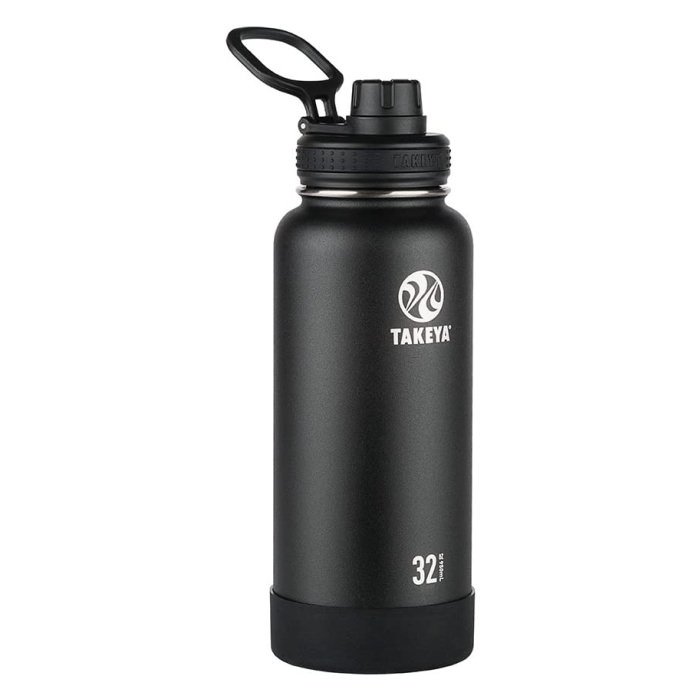
Takeya Actives Insulated
Most Affordable and Customizable Insulated Water Bottle
CleverHiker Rating: 4.4/5.0
Price: $35
Weight: 1 lb.
Insulated: Yes
Pros
- Many color options
- Accessories included (bottle boot, chug cap)
- Leakproof
Cons
- Lid is slightly less durable than others
- Heavy for backpacking
- Many wide mouth bottles don’t fit in cup holders
The Takeya Actives Insulated water bottle blends a range of practical features and customization options in a bottle that is affordable, stylish, and ready to take on adventures at home or on the trail. This stainless steel insulated bottle comes in 18 oz, 22 oz, 24 oz, 32 oz, and 64 oz capacities. This wide range exceeds the offerings of most models we tested, so you can pick a size perfectly suited to your personal hydration preferences.
The Actives water bottle has a slim, stainless steel design that holds its own against bumps and drops. We found that it packs efficiently and has the durability required for outdoor usage. A loop built into the lid provides convenient carry access. The mouthpiece of the spout lid isn’t the sturdiest, but it has a screw-on protective cover. Removing the lid provides a wide mouth access option, which makes it easy to add ice and hydration mixes and hand wash the (dishwasher-safe) bottle.
For an insulated bottle, the Takeya is less expensive than many other models. Even with the cheaper price tag, it offers quality temperature control. The double wall insulation is compatible with hot and cold liquids. In our field testing, we found cold liquids maintained their temperature most of the day, and hot liquids and ice held up for a few hours.
With its moderate price tag and effective insulation, the Takeya Activities Insulated is an affordable, durable, and practical option that people can tailor to their style preferences.
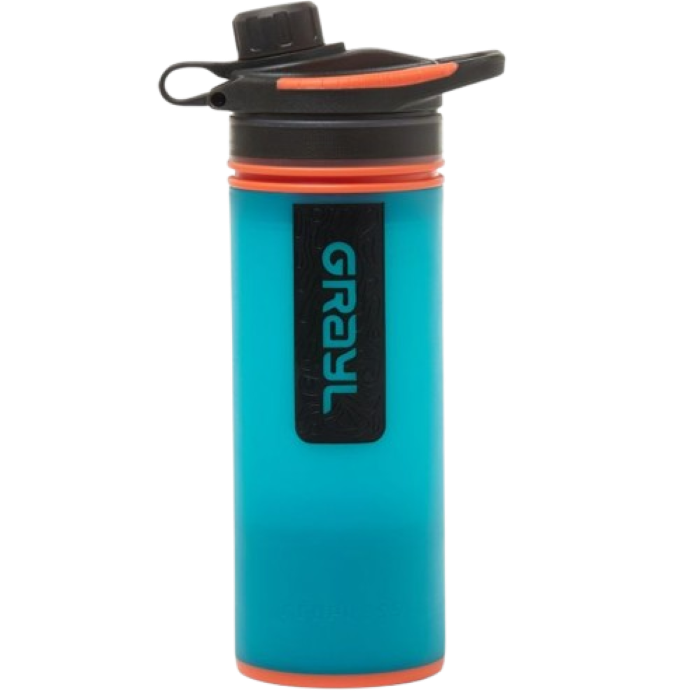
Grayl GeoPress
Best Filter Water Bottle
CleverHiker Rating: 4.3/5.0
Price: $100
Weight: 15.9 oz.
Insulated: No
Pros
- Intense filtration capability
- Compatible with hydration mixes
- Durable
- Leakproof
- Replaceable filter
Cons
- Expensive
- Heavy for backpacking
When it comes to filtering water in the backcountry, the intensive filtration capability of the Grayl GeoPress eliminates any worry or risk.
In other filter-capable bottles, water passes through the filter in the process of drinking, so water in the bottle remains unfiltered until drunk. Instead of drinking water through a filter, the Grayl presses water from an outer cup through a purifier cartridge into the inner press, leaving you with a bottle full of already filtered water.
The GeoPress purifier cartridge filters out protozoa, bacteria, viruses, chemicals, pesticides, and heavy metals while also improving water’s taste, smell, and clarity – filtration unmatched by other bottles we tested. A unique aspect of the Grayl design is the purifier cartridge’s one-way valve. It prevents liquid from flowing back into the cartridge, allowing us to use hydration mixes, which is not possible with most filter bottles.
The Grayl requires some force to press water through the cartridge. Still, the process is quick and simple, giving us a fully filtered bottle of water in seconds. The narrow mouth makes drinking in motion easy and spill-free. Plus, there’s a protective covering which screws over the mouthpiece and attaches to the lid, keeping liquid in and dirt and debris out. The entire lid is easily removed for easier hand washing (this bottle is not dishwasher safe) and adding hydration mixes or ice.
Featuring a slim cylindrical design and a convenient carrying handle, the GeoPress fits easily into packs. It weighs in on the heavier side, and its price tag is steep. Replacement cartridges, which need to be cycled out at least every three years, run about $30, making this bottle in total one of our priciest recommendations. However, the no-worry aspect of its filtration prowess makes this an indispensable tool for backcountry hydration.
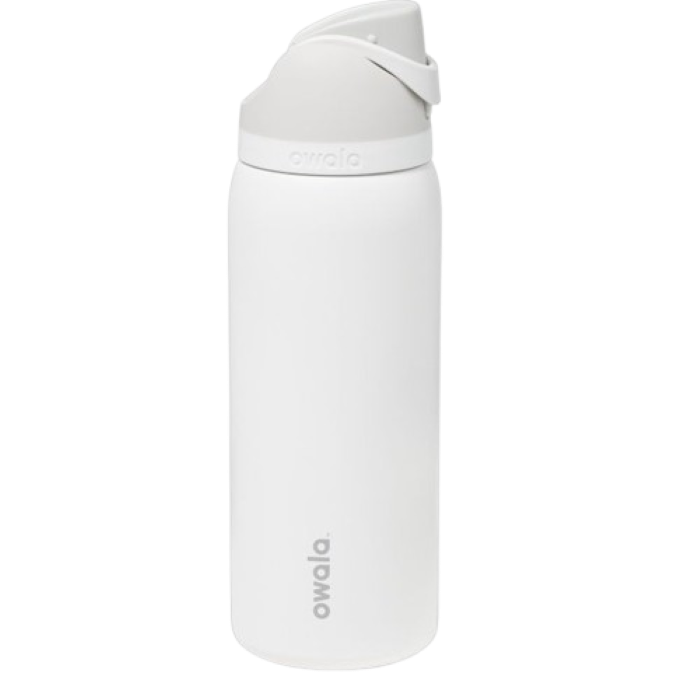
Owala FreeSip Vacuum Water Bottle
Best Budget Insulated Water Bottle
CleverHiker Rating: 4.2/5.0
Price: $35
Weight: 15.2 oz.
Insulated: Yes
Pros
- Lots of color choices
- Leakproof
- Easy to add ice/supplements
- Freesip spout accommodates different drinking methods
Cons
- Can't use with hot liquids
- Not dishwasher safe
- Doesn't fit in cup holder
The higher price tag of insulated water bottles can be a setback, but the Owala FreeSip Vacuum Insulated costs less without sacrificing features.
With its triple layer insulation, the Owala kept water cold throughout the day, and ice remained intact for several hours. Although the insulating power of the FreeSip impressed us, it cannot hold hot liquids, so it’s not as versatile as other insulated models. The incompatibility with hot liquids doesn’t make the added weight of insulation worth it for longer hikes and trips into the backcountry. Still, the FreeSip is well suited for those looking to keep beverages cold on an everyday basis.
The most unique component of Owala’s bottle is the FreeSip lid. It features a dual aspect spout: a smaller opening with a built-in straw for controlled sipping and a wide mouth opening for fast access chugging. This multi-use spout eliminates the need for multiple lids. A push-button lid flips open for spout access. When closed, it keeps the mouthpiece protected and the bottle tightly sealed. The lid remains locked courtesy of an additional loop, which feels like overkill, given how well the lid stays closed already. However, the locking loop doubles as a useful carrying handle.
Though not as rugged as other stainless steel bottles, the solid metal design suffered only minor dents and scratches after enduring several falls. This suggests its ability to survive years of use. The Owala’s frame is sleek, enabling it to fit into backpack pockets and bags for daily carrying. It comes in numerous attractive color combinations and several different capacity choices, including a 24, 32, and 40 ounce. The eye-catching aesthetics and an innovative spout design – plus a reasonable price point – places the FreeSip as a high-quality option for daily hydration.
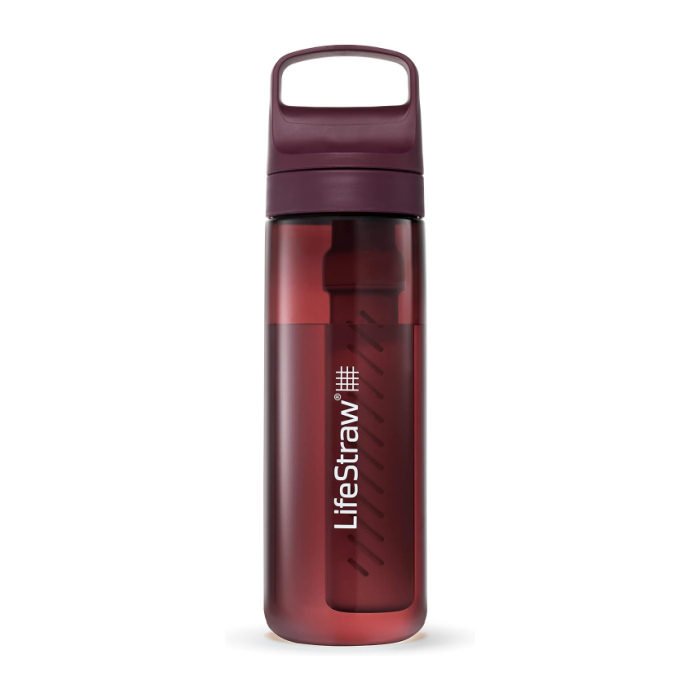
LifeStraw Go SERIES
Best Budget-Friendly Filter Water Bottle
CleverHiker Rating: 4.1/5.0
Price: $45
Weight: 9 oz.
Insulated: No
Pros
- Durable
- Convenient carry clip
- Replaceable filter
- Light enough for backpacking
- Fits in cup holders
Cons
- Hard to tell when the filter is no longer effective
- Expensive
- Can’t be used with hydration mixes
Water quality is important wherever we play, and the LifeStraw Go Series bottle has a built-in filter that ensures our water is safe and clean at a reasonable cost.
The bottle features a two-stage filtration system: a Membrane Microfilter that removes bacteria, parasites, microplastics, sand, and dirt and a Carbon Filter that reduces chlorine, odors, and organic chemical matter. Both stages are replaceable; although, replacement times can be difficult to track and vary between stages. The filter prevents the use of hydration mixes but improves the taste of water, making it a solution for funky-flavored tap water and camping trips.
Built with BPA-free plastic, the bottle is sturdy in its construction. In testing its capacity to withstand falls, neither the bottle nor filter sustained any damage, even when dropped on harder surfaces. The only impact was several scratches on the body and handle, making this a water bottle a worthy companion on outdoor adventures.
This bottle exhibits a few quirks in its design. Water passes through the filter before getting sipped through a narrow rubber mouthpiece. This makes drinking slightly slower than the average bottle- some pull is required to suck water up through the filter. We also experienced some issues with pressurization when the bottle was fully filled. Upon removing the lid covering the mouthpiece, water had a tendency to spurt up through the mouthpiece and leak everywhere. Simply bringing the water level down eliminated this issue, but it happened consistently whenever the bottle was freshly filled.
The LifeStraw comes in a variety of colors and size options. For those looking to reduce their plastic usage, LifeStraw also offers an Insulated Stainless Steel model as part of the Go Series.
For a bottle that not only holds water but also filters it, the LifeStraw Go is surprisingly light. The manageable weight and filtration capability make it particularly well suited for backpacking usage, offering a quick-drink option for water sources encountered on the trail.
More: Lifestraw Go full review
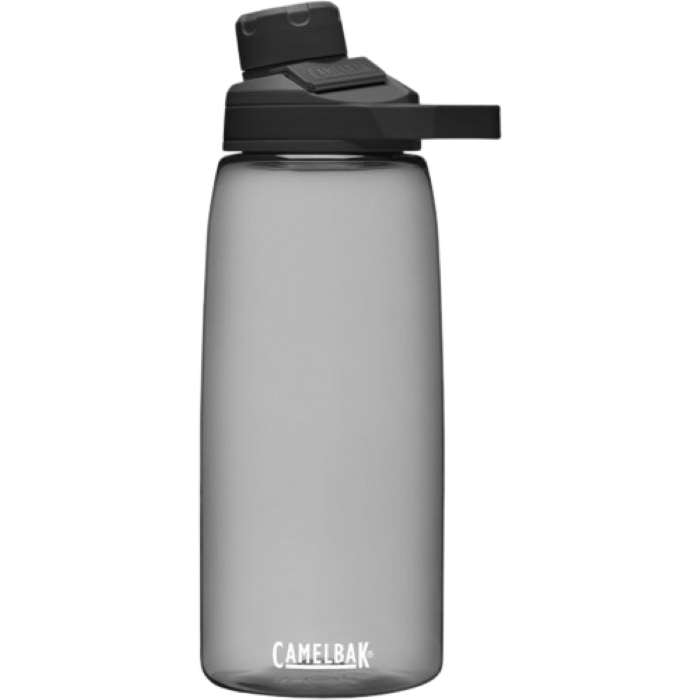
Camelbak Chute Mag Renew
Most Affordable Water Bottle
CleverHiker Rating: 4.0/5.0
Price: $17
Weight: 7 oz.
Insulated: No
Pros
- Some color choices
- Leakproof
- Easy to add ice/supplements
- Dishwasher safe
Cons
- Clunky lid design
- Doesn't fit in cup holder
Staying hydrated shouldn’t break the bank, and the CamelBak Chute Mag Renew is a reliable water bottle at an affordable cost. One of the most inexpensive bottles we tested, the CamelBak makes hydration straightforward and affordable.
The Chute Mag is defined by its lid, which features a spout covered by an attached protective lid that stays in place via an internal magnet. The magnet holds the spout cover in place, so it doesn’t hit you while drinking. Though thoughtful in premise, the design is somewhat clunky. We found the spout cover awkward to unscrew and tighten. However, when sealed, both the lid and spout cover fit snugly and are free of leakage. The spout itself has a built-in contour to better fit to your lip and funnel water into your mouth – a subtle yet practical design element.
Although too wide to fit into a cup holder, the CamelBak Chute Mag has a built-in handle which aids in carrying and fits well into a backpack pocket. Its lifespan may be shorter than the stainless steel bottles tested, but the BPA-free plastic body of the Renew exhibits a solid, seam-free build that came away from rough falls with just a few scratches.
This bottle may not appeal to those looking for dozens of customization choices, but it is available in several colors and sizes. It’s also compatible with CamelBak’s MultiBev Pak Cap as an alternative lid option. It’s nothing fancy. But for those looking for a straightforward and budget-friendly water bottle, the CamelBak Chute Mag Renew is a great all-around option for daily use and hikes.
More: Chute Mag full review
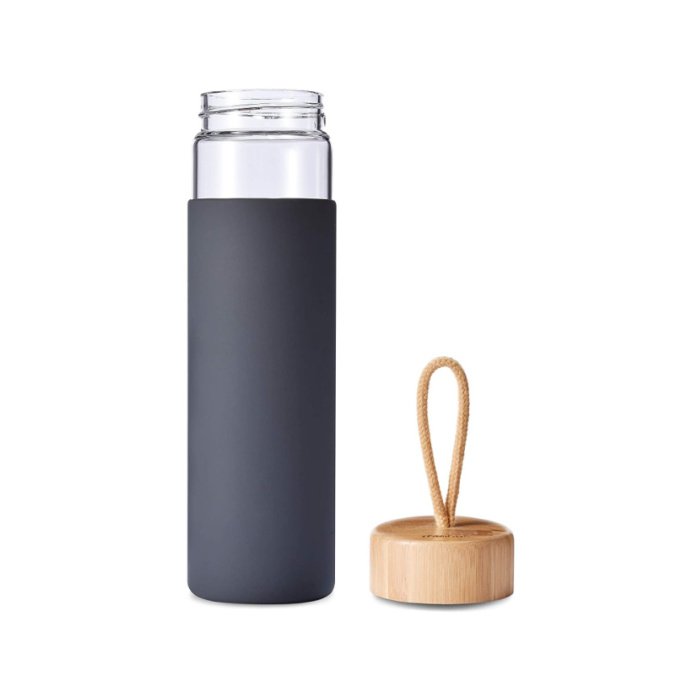
Yomious Glass Bottle
Best Environmentally-Friendly Water Bottle
CleverHiker Rating: 3.9/5.0
Price: $18
Weight: 14.7 oz.
Insulated: No
Pros
- Affordable
- Stylish
- Durable
- Leakproof
- No plastic touches water
- Ergonomic size/shape
- Lightweight
- Dishwasher safe (except for lid)
Cons
- Lid must be hand-washed
For those looking for a water bottle that pairs a sleek design with environmental consciousness, the Yomious Glass bottle provides a perfect, plastic-free option. Made of glass with a bamboo lid and covered by a colorful protective silicone sheath, this bottle is sustainable and stylish. Free from seams that might threaten its structural integrity, the Yomious is sturdy for being made of glass. Though the glass construction is a bit too fragile for activities more adventurous than daily drinking, the silicone sheath keeps the bottle safe against minor bumps and falls. Additionally, the bamboo lid screws on effortlessly, sealing the bottle tightly and preventing any leakage.
The bottle’s slim design can slide into cup holders and bags, offering portability wherever you go. The lid features a woven handle that is soft and flexible, and the silicone sheath provides a firm grip. The Yomious is not insulated but – being glass – accommodates both hot and cold liquids. Aside from being comfortable to grip, the silicone sheath also serves to insulate your hands from hot liquids.
The Yomious is not dishwasher safe, but its wide mouth provides easy access for hand washing. The bottle also comes with a sponge that makes cleaning convenient. Ice and hydration mixes can be easily added, and the glass body ensures that the bottle doesn’t hold onto any residual flavors.
A glass bottle might not be the best option for extreme adventurers. But for those looking for an affordable and environmentally friendly bottle for everything from water to their daily coffee, the ergonomic and attractive design of the Yomious fits the bill.
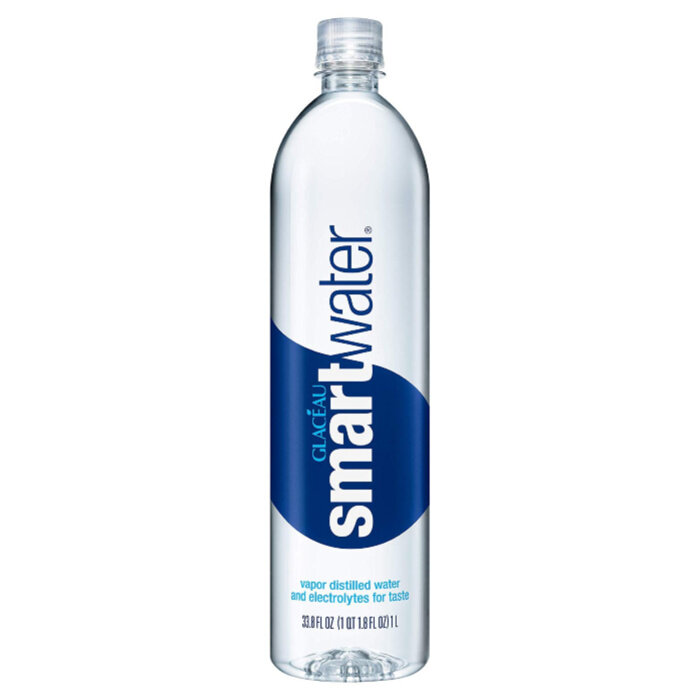
Glaceau Smartwater
Best Water Bottle for Ultralight Backpacking
CleverHiker Rating: 3.9/5.0
Price: $3
Weight: 1.3 oz.
Insulated: No
Pros
- Ultralight for backpacking,
- Compatible with Sawyer Squeeze Water Filter
- Fits in cup holders/backpack side pockets
Cons
- Shorter lifespan than most other bottles (but will still last a long time if treated with care)
If you cross paths with any thru-hiker, there’s a good chance you’ll see them carrying a bottle of Glaceau SmartWater: the bottled water that has become synonymous with ultralight backpacking. Available at almost every grocery store and gas station, SmartWater is accessible whether you are in a pinch or are hitting the trail for several months.
SmartWater bottles are intended for single use, but they are made with plastic sturdier than most disposable water bottles. This makes it possible to reuse them multiple times. Though lacking the burliness of hard plastic bottles, SmartWater bottles hold their own against drops, sustaining very little damage.
The bottle’s narrow mouth makes for quick and easy sipping, but the smaller opening makes it difficult to wash by hand. This potentially limits their long term use. The slim design enables it to fit seamlessly into packs, backpack pockets, and cup holders, and the softer plastic construction offers some flexibility in squeezing the bottle into the tighter corners of a bag.
As one of our most bare-bones recommendations, these bottles do not offer many features or options for customization; however, they’re available in 500mL, 700mL, and 1.5L sizes. A nice plus, SmartWater bottles are compatible with the Sawyer Squeeze filter, which is why many thru-hikers choose them as their hydration sources. For the average person, it is probably not necessary to sacrifice features like longevity in favor of a single use bottle. However, for situations where every ounce counts, the unmatched ultralight capability and ubiquity of SmartWater bottle makes it an obvious choice.
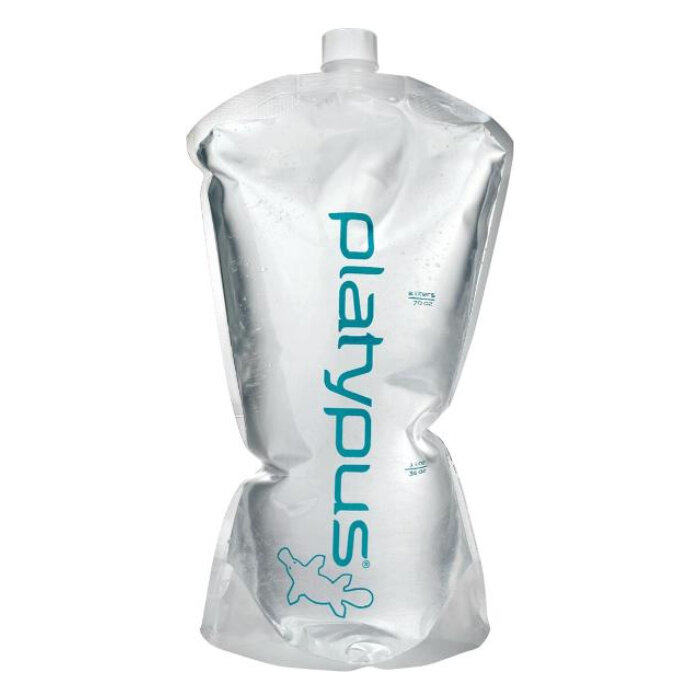
Platypus Platy Bottle
Ultralight & Packable Water Storage for Backpacking
CleverHiker Rating: 3.7/5.0
Price: $19
Weight: 1.3 oz.
Insulated: No
Pros
- Ultralight for backpacking,
- Affordable
- Compact
- Leakproof
- Durable for a soft bottle
- Large capacity for long water carries/storage
- Measurement lines
Cons
- Awkward for everyday use (floppy)
- Not as easy to clean as some others
- Not as durable as rigid bottles
When quantity becomes a priority for your water carry, the Platypus Platy Bottle offers high capacity and packability. With its weight barely tipping the scale, the Platypus enables you to focus on water weight – not how many ounces the bottle adds to your pack.
Similar to a big plastic bag with a resealable mouthpiece, the Platypus Platy Bottle is nothing glamorous. Despite its simple appearance, the bottle is made from a tough yet flexible plastic that’s built to withstand scrapes, falls, and being shoved into a fully loaded backpack. A seam runs around the entirety of the bottle, which poses a particular durability problem in the area near the mouthpiece. Especially after prolonged bending and use, these seams can wear down and deteriorate over time. However, with its burly plastic makeup and sturdy construction, the seam’s durability probably won’t be an issue until the Platy Bottle has gone through a lot of wear and tear.
The flexibility of the bottle is one of its most appealing features. When empty, the bottle rolls up or folds easily, so it’s easy to stash in a backpack pocket or pouch to keep out of the way. When fully filled with liquid, the bottle maintains its flexibility to squeeze into spaces a hard-body water bottle may not fit. This effortless packability, paired with its ultralight weight, make the Platypus perfect for backpacking or travel.
With a 2L capacity, the Platypus Platy Bottle is an effective and efficient option for water storage when refills aren’t available. The Platypus allows you to carry more water without adding extra weight. The bottle is also compatible with the GravityWorks Filter, making it an even more useful water storage option for backpacking.
Product Comparison Table
| oSort | Product | Price | Weight | Insulated | Durability | Ergonomics | Insulation | Weight Score | Features | 0 |
Hydro Flask Wide Mouth View at REI View at Amazon |
$45 | 1 lb. 0.8 oz. | Yes | 4.8 | 4.6 | 4.8 | 3.9 | 4.9 | 1 |
Hydro Flask Standard Mouth View at REI View at Amazon |
$40 | 12.3 oz. | Yes | 4.8 | 4.8 | 4.8 | 4.6 | 4.8 | 2 |
HydraPak Flux View at Amazon View at REI |
$27 | 3.6 oz. | No | 4.4 | 4.6 | 3.6 | 4.8 | 4.4 | 3 |
Nalgene Wide Mouth View at REI View at Amazon |
$17 | 6.25 oz. | No | 4.6 | 4.3 | 4.0 | 4.6 | 4.2 | 4 |
YETI Rambler Vacuum View at REI View at Amazon |
$50 | 1 lb. 8 oz. | Yes | 4.9 | 4.2 | 4.9 | 3.8 | 4.8 | 5 |
Takeya Actives Insulated View at Amazon View at Takeya |
$35 | 1 lb. | Yes | 4.6 | 4.6 | 4.7 | 4.2 | 4.6 | 6 |
Grayl GeoPress See at REI See at Amazon |
$100 | 15.9 oz. | No | 4.7 | 4.5 | 4.2 | 3.8 | 4.5 | 7 |
Owala FreeSip Vacuum Water Bottle View at REI View at Amazon |
$35 | 15.2 oz. | Yes | 4.5 | 4.5 | 4.6 | 4.1 | 4.4 | 8 |
LifeStraw Go SERIES View at REI View at Amazon |
$45 | 9 oz. | No | 4.3 | 4.0 | 4.0 | 4.7 | 4.0 | 9 |
Camelbak Chute Mag Renew View at REI View at Amazon |
$17 | 7 oz. | No | 4.0 | 3.8 | 3.9 | 4.4 | 3.8 | 10 |
Yomious Glass Bottle View at Amazon |
$18 | 14.7 oz. | No | 3.5 | 4.1 | 3.8 | 3.7 | 4.1 | 11 |
Glaceau Smartwater View at Amazon |
$3 | 1.3 oz. | No | 3.8 | 4.2 | 3.6 | 4.9 | 3.5 | 12 |
Platypus Platy Bottle View at REI View at Amazon |
$19 | 1.3 oz. | No | 3.9 | 3.6 | 3.5 | 4.9 | 3.9 |
|---|
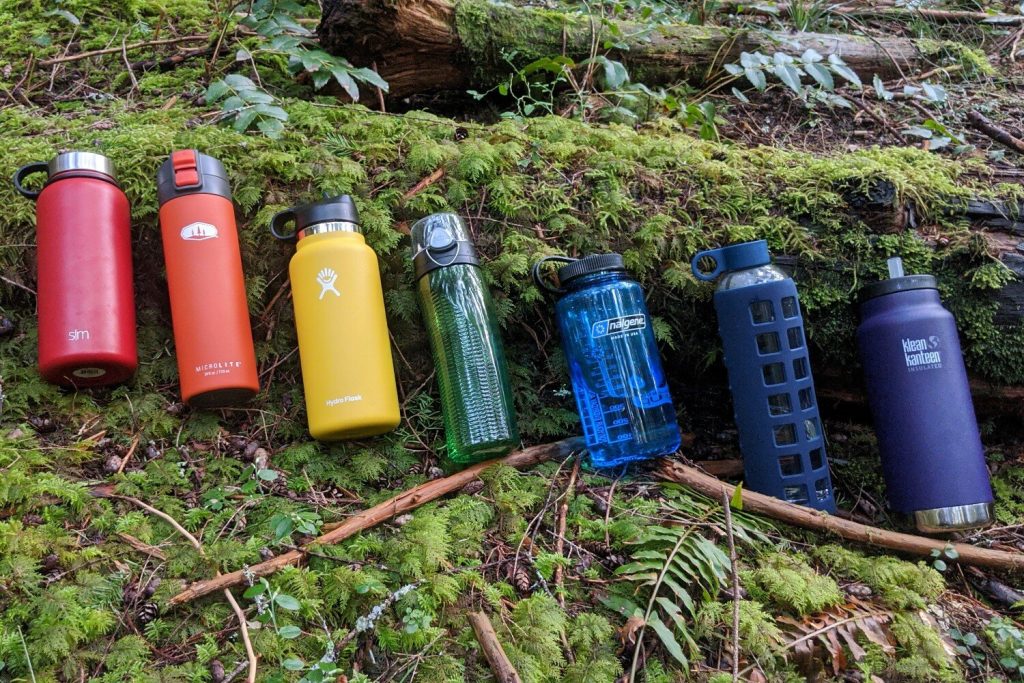
How We Test & Methodology
We assessed each backpacking tent based on five criteria: comfort, weight and packability, weather resistance, ease of setup, and durability. We have spent a minimum of 20 nights (but in some cases, over 100) in each of these models in a range of hiking conditions, from the hot, dry deserts of the southwest to the coldest, wettest reaches of northern New England.
We assessed durability, ergonomics, insulation, and weight as key factors in determining not only a water bottle’s hydration power, but its potential longevity and ease of use. Additionally, we looked at available features- such as color options and lid design- acknowledging the importance of style and customization in choosing the perfect water bottle. For more insight into our testing process, these factors are outlined in greater depth below.
DURABILITY
When evaluating durability, we focused on the construction of the water bottles and their potential longevity. We looked at each bottle’s material- glass, plastic, and stainless steel- and considered how long it would last before needing replacement.
For hard bottles, we observed whether they were easily dented or damaged, while we monitored whether soft bottles might be susceptible to rips or tears. We tested the bottles’ abilities to handle everyday use by putting them through drops and hits against other objects and examined each bottle for flexing or seams that could threaten structural integrity.
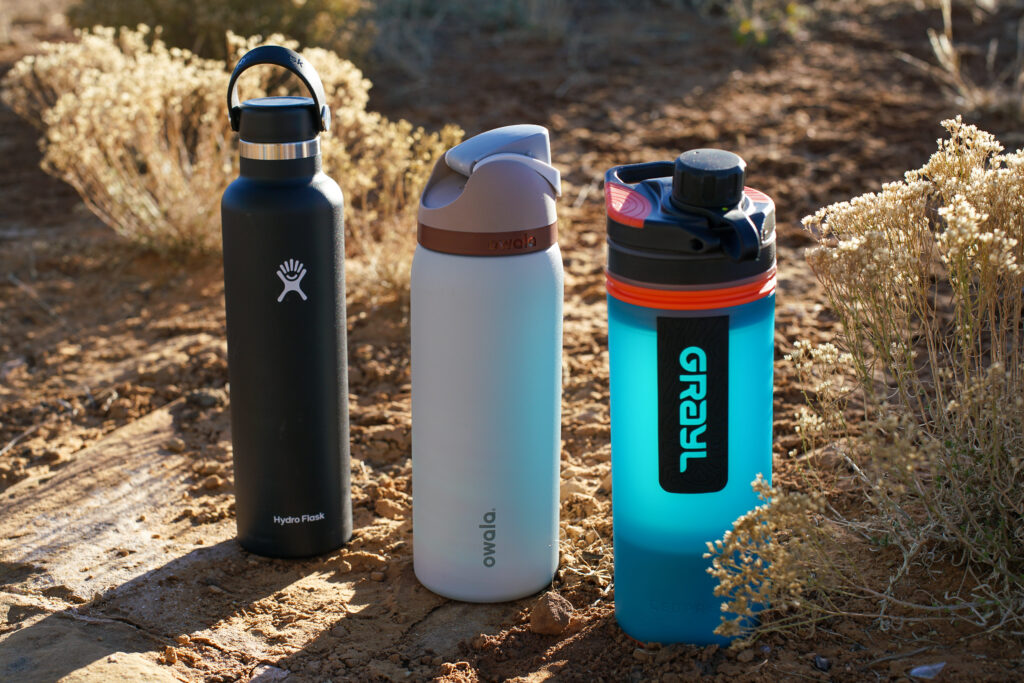
ERGONOMICS
Ergonomics looks at the design efficiency and practicality of a water bottle, including its ease of use, packability, and drinkability. We looked at design elements- such as handles, mouthpiece size and type- to see how comfortable a bottle was to carry and drink from, noticing in particular any spillage while trying to drink, especially while in motion.
We carried bottles in backpack side pockets and main compartments to see how easily different styles and shapes fit and could be stowed. We also tried each bottle for size in the standard vehicle cup holder.
INSULATION
Some water bottles offer insulation. For both insulated and non-insulated bottles, we examined a bottle’s ability to preserve a liquid’s temperature, paying particular attention to an insulated bottle’s effectiveness. We observed how long it took for hot and cold beverages to become lukewarm as well as the time it took for ice to melt.
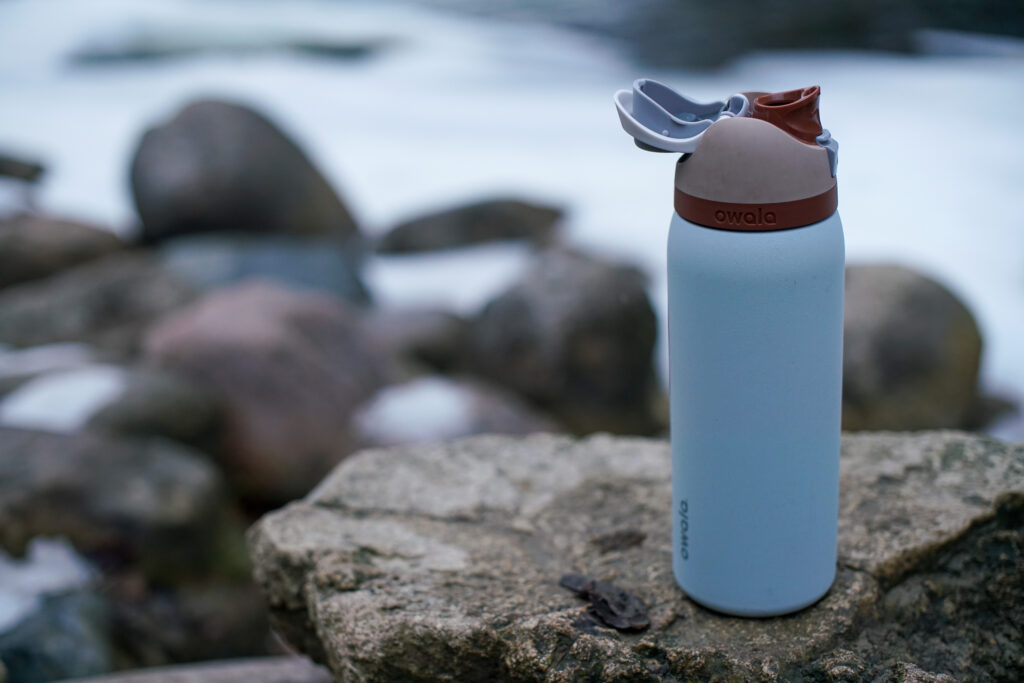
WEIGHT
The extra pounds and ounces of a bottle can be a make or break for water carry, particularly when it comes to backpacking or travel. To evaluate weight, we measured the water bottles individually, but also assessed how similar models compared to one another. Hiking for miles with each bottle enabled us to feel out its comfortability over time and distance and determine whether its weight impeded in the overall experience. Insulation often makes a water bottle heavier. For insulated bottles, we considered whether the insulation provided enough value to override any added weight.
FEATURES
When assessing a water bottle’s features, we looked at the accessories and varying design elements available as well as the consumer’s ability to tailor the model to their personal preferences. We visited manufacturer websites to see customization options, including color choices, sizes, and available accessories- such as lid variations, straws, and carrying handles. We also assessed specialty elements that might give extra value to a bottle, like filter compatibility and environmental friendliness.
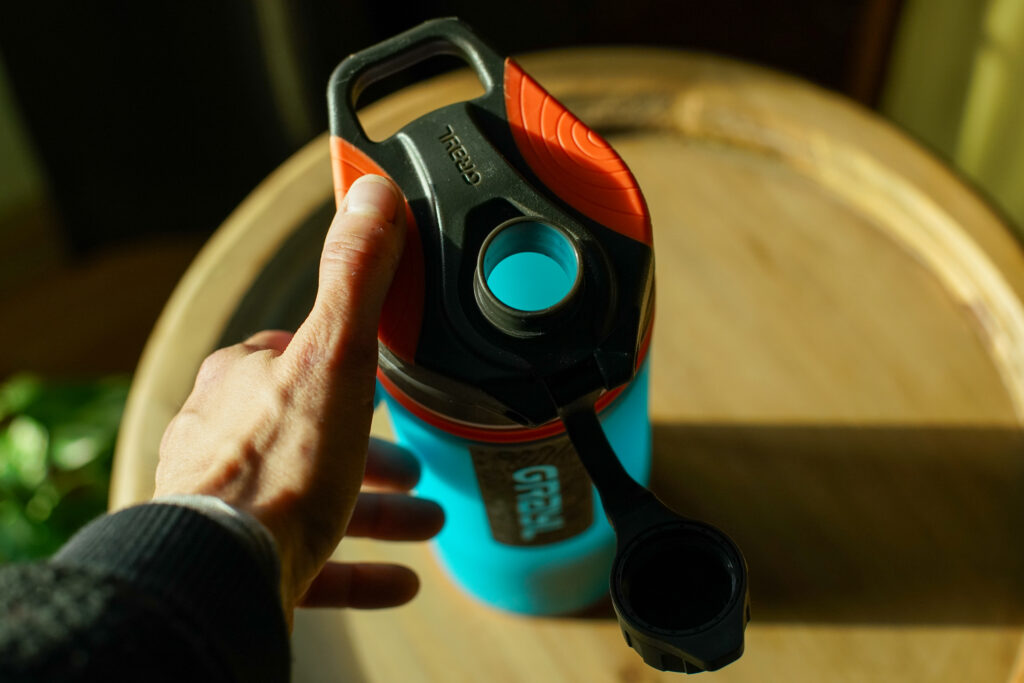
Why Trust CleverHiker
For Gear Analyst Marion Tucker, hydration is critical in all her outdoor endeavors. As a backpacker, climber, and former kayak guide, she has spent years exploring the trails, crags, and waterways of the western United States. Always armed with a water bottle, her experience ranges from storing fresh water for multi-day sea kayaking trips to finding streams to filter amidst alpine treks. For this review she researched forty different water bottles and tested the thirteen most promising ones side by side. Marion’s background in the variability of outdoor hydration enables her to thoroughly assess the factors and specifications that the best water bottles exemplify.
Analysis & Results
We assess water bottles based on value, durability, ergonomics, insulation, weight, and features. Look below to see which models proved exemplary in each category:
VALUE
A price tag isn’t necessarily indicative of the quality of a water bottle, but it does impact what we choose to buy. We consider how cost paired with performance speaks to the overall value of a water bottle.
Though the upfront cost is higher than most of the bottles we tested, the Hydro Flask Wide Mouth is an investment in a water bottle with indispensable features and longevity. The price tag might be steeper, but you get what you pay for. In the mid price range, the Takeya Actives Insulated maintains a wealth of features, including efficient insulation, durable construction, and an ability to personalize not too dissimilar to the Hydro Flask. Ultimately, you don’t have to break the bank for a high quality water bottle, as shown by the inexpensive HydraPak Flux. Remarkable packability, filter compatibility, and ultralight status offer value well beyond its low cost.
DURABILITY
A durable water bottle stands up to the roughest usage and conditions. We found that metal bottles handle drops, falls, and hits better than their plastic or soft-shell counterparts.
In particular, the YETI Rambler impressed us with its burly design and high quality materials. The Hydro Flask Wide Mouth was a close second. Its steel build is slightly less robust than the Rambler, but handled our drop tests with minimal impact. Though we found that stainless steel bottles ranked highest in durability, the Nalgene Wide Mouth demonstrates the strength of a well-made plastic bottle and shows you don’t have to pay a high price for a water bottle built to last. We’ve heard people joke that a Nalgene would survive getting tossed off a mountain. Though we have yet to put this exact scenario to the test, our Nalgene came away from our test falls relatively unscathed.
ERGONOMICS
Differences in design elements- spout size, bottle shape, lid closure- impact a water bottle’s efficiency, practicality, and ease in drinking.
The Hydro Flask Standard Mouth effectively combines durability and ergonomics with its solid yet sleek frame that enables it to fit everywhere from cup holders to the tight corners of a pack. The Owala FreeSip Vacuum Insulated stood out for its innovative spout design. The dual aspect FreeSip divides the spout in half, one side for chugging and the other for sipping via the built-in straw. This spout design is unlike any other offered and we loved having a choice in drinking method without needing to swap lids. Finally, the Takeya Actives Insulated was also notable for its streamlined and practical build. Similar to the Hydro Flask Standard Mouth, it has a slim profile that makes it a breeze to slide into pack corners and pockets.
INSULATION
The ability to sip cold water hours into a hot afternoon hike is a definite perk to carrying an insulated water bottle. Some models keep hot liquids hot and cold liquids cold.
The YETI Rambler steals the show with its double wall vacuum insulation. Both hot and cold liquids remained at their intended temperatures for the entire day. Although edged out by YETI’s incredible insulating capability, the Hydro Flask Wide Mouth and Hydro Flask Standard Mouth are also top performers.
FEATURES
We love the ability to customize a water bottle to our personal preferences and the Hydro Flask Wide Mouth, Hydro Flask Standard Mouth, and the YETI Rambler each exemplify the extent to which a water bottle can be made to order. Both Hydro Flask and YETI offer their bottles in multiple sizes, providing capacity options for varying consumption needs. Each of these models also come in over a dozen color options, vastly surpassing most of the bottles featured on this list. Whether looking for something fun and vibrant or relaxed and muted, Hydro Flask and YETI provide color choices that fit the bill, including several stunning shades not available anywhere else.
WEIGHT
They may take the cake when it comes to durability, but stainless steel bottles struggle to measure up when the focus is saving weight. Plastic bottles were our favorite for the scenarios when you want to keep things as light as possible.
Glaceau SmartWater stands as the ultimate ultralight bottle. Although it lacks the features offered by other water bottles, its almost negligible weight saves ounces that can go towards other items or be cut entirely. Similarly, the Platypus Platy Bottle barely tips the scale and – unlike SmartWater – has the added bonus of folding up for easy storage. The HydraPak Flux struck us as an ultralight bottle with longevity. Its soft body is incredibly durable, but has an ability to be contorted and compacted for packing or storage. Although not nearly the lightest bottle on our list, the LifeStraw Go Series did catch our attention for minimizing ounces while also offering effective built-in filtration.
How to Choose a Water Bottle
USE
When picking out the perfect water bottle, the primary guiding question should be “what am I using this for?” What you need to keep yourself hydrated at the office or the gym looks a lot different than what you need when you’re spending days backpacking through the mountains. Considering how and where you are planning to use a water bottle impacts your choice insulation, weight, and volume.
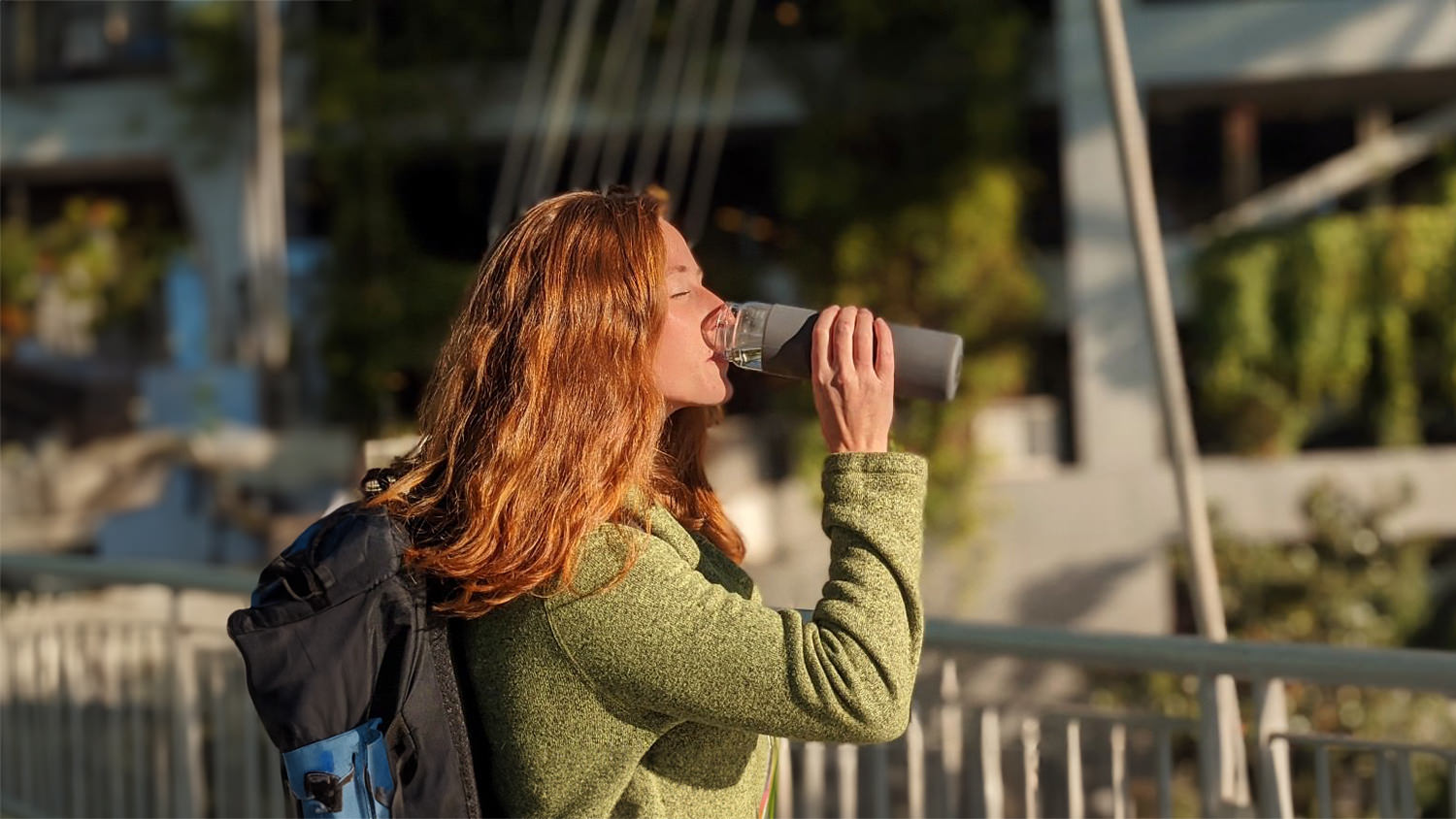
LONGEVITY
Purchasing a water bottle probably isn’t going to break the bank, but having a bottle that will hold up over time is better than buying a new one every year. Particularly if you’re using it in rough backcountry conditions, choosing one that’s durable and made of strong materials will ensure you won’t have to constantly seek out a replacement. Paying attention to what a bottle is made of- metal holds up better than plastic and is less susceptible to damage- and avoiding those with structural deficiencies- seams or flexing- will lead you towards a water bottle with longevity.
A water bottle’s ability to last not only relates to its material construction, but how well it’s able to be cleaned. A water bottle that’s hard to wash can easily develop mold, potentially shortening its lifespan. Bottles with wide mouth openings make hand washing less of a hassle, while it’s even simpler to keep those that are dishwasher-safe clean and extend their life.
DRINKING METHOD
Chug cap. Straw lid. Wide mouth. Narrow mouth. With an abundance of lid styles and spouts, one simply doesn’t just drink out of a water bottle. This variety means you can sip, gulp, and chug, depending on what opening your bottle possesses. The size and style of an opening impacts how quickly and how much water you’re able to drink. For those that need hydration on the go, straws and narrow mouths offer easy sipping free from spillage, even while in motion. Wide mouth and chug cap styles are great when you need to consume a lot of water quickly, but are more difficult to drink from while moving and make it particularly hard to avoid spills.
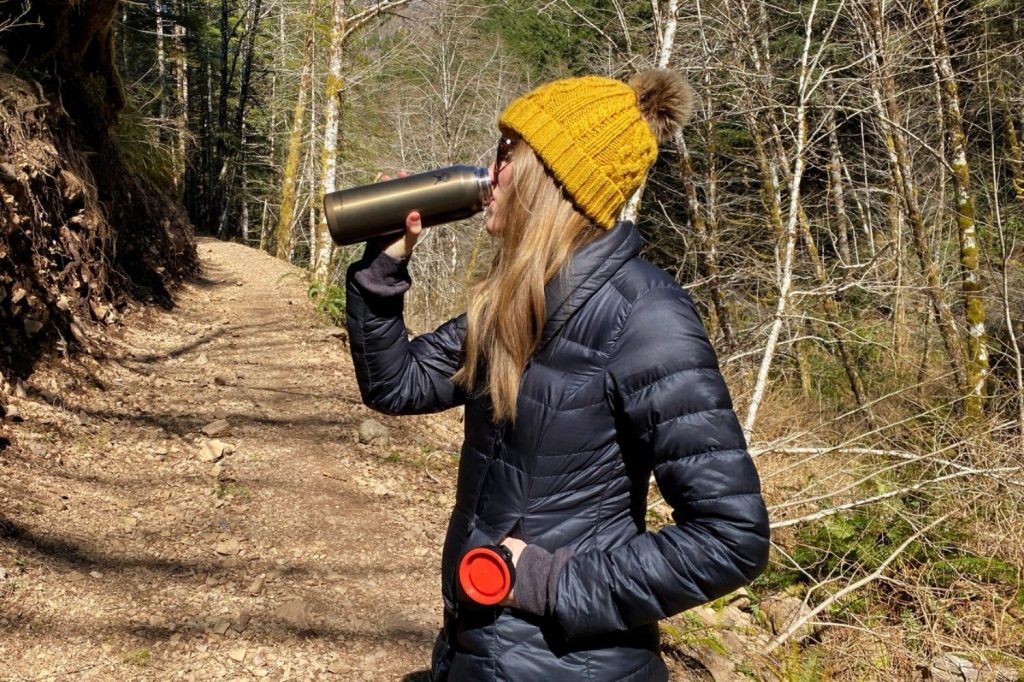
ENVIRONMENTAL CONSCIOUSNESS
As many people look to reduce their plastic consumption and move away from single-use products, water bottle companies have embraced materials like stainless steel and glass as worthy alternatives. If eco-friendliness is a priority, glass bottles often feature completely plastic-free design, while stainless steel bottles can offer durability and insulation for a sturdier reusable option.
However, many bottles continue to feature plastic elements, such as lids, and fully plastic water bottles still exist; often proving useful, especially since their composition often makes them lighter weight than metal or glass options. If budget or ultralight use necessitates a plastic bottle, we recommend looking for bottles with the “BPA-free” label. A chemical used to make plastic, BPA has been found to cause harm to humans, particularly infants and children. BPA can still be found in many consumer products, so it’s important to double check your water bottle isn’t among them.
CUSTOMIZATION
As many people look to reduce their plastic consumption and move away from single-use products, water bottle companies have embraced materials like stainless steel and glass as worthy alternatives. If eco-friendliness is a priority, glass bottles often feature completely plastic-free design, while stainless steel bottles can offer durability and insulation for a sturdier reusable option.
However, many bottles continue to feature plastic elements, such as lids, and fully plastic water bottles still exist; often proving useful, especially since their composition often makes them lighter weight than metal or glass options. If budget or ultralight use necessitates a plastic bottle, we recommend looking for bottles with the “BPA-free” label. A chemical used to make plastic, BPA has been found to cause harm to humans, particularly infants and children. BPA can still be found in many consumer products, so it’s important to double check your water bottle isn’t among them.
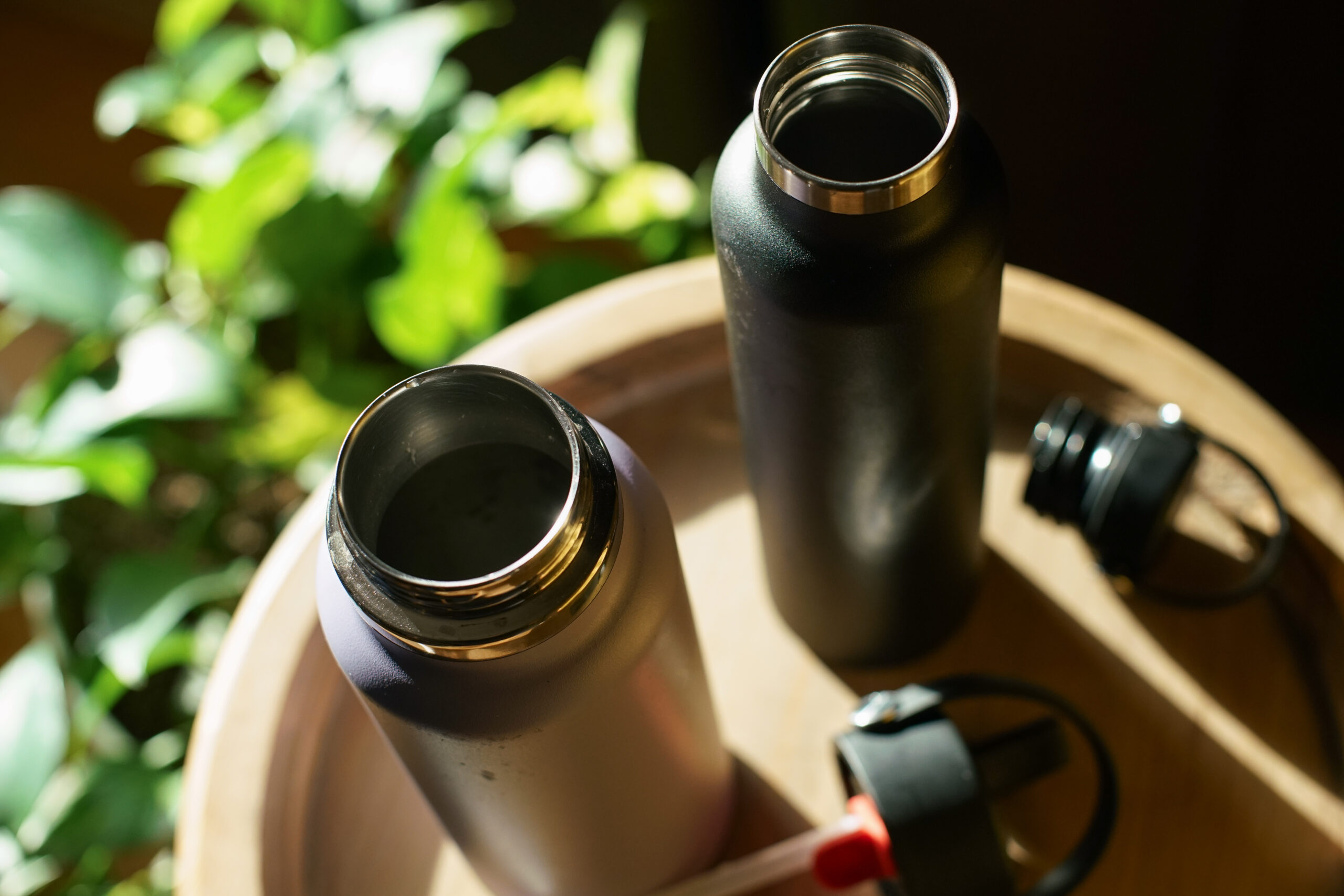
Conclusion
Regardless of whether you’re hitting the gym or a backcountry trail, a good water bottle will help you stay hydrated over many miles and years of use. We meticulously tested bottles’ durability and weight, assessed ergonomic components, put their insulation capabilities to the test, and tracked their ability to be customized to your specific taste. Through strenuous testing in the field, we created this list of recommendations to help guide you towards the water bottle best suited for your budget and needs.


